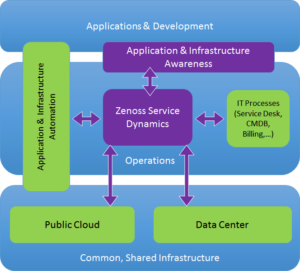We all know IT organizations are all undergoing major transitions, but for many teams, it’s happening without conscious thought and planning.
Expect overlap, wasted effort, and much angst. But you’re smarter than that! Ignoring desktop support, I see three major functions emerging:
- Application Development Invention
- IT Services Product
- Infrastructure Commodity
One way to see this happening is to look for common problems. They exist, and I’ll review those later. Let’s look at these three emerging functions.
Application Development Function
For many years, application development garnered much less attention than it’s getting today. But an urgent need (let’s not call it panic, eh?) to become more digital, to avoid getting disrupted, to acquire new customers, to change EVERYTHING NOW has made application development sexy.
For people who thrive on uncertainty and love to fail fast this is great news. You can recognize the new app dev function because they do only enough planning to get through the week, and look, it’s another release! Yep, it’s the Agile development process.
Simon Wardley calls these people Pioneers - they charge off into the uncharted wilderness.
IT Services Function
The IT Services function provides a product for people who rely on applications, for people who build them, and for people who pay for it all.
Unlike the past, they can now rely on commodity resources - public cloud and converged infrastructures - and have no need to think about building their own.
IT Services is a product, not a commodity. Just like Salesforce, it needs to be customized to support each organization’s needs, but the core functions remain the same.
The key focus items for this team are built on Lean processes - eliminating waste and duplication, learning, working with the whole, building quality.
Per Wardley, we can think of these people as settlers. They build roads, put in traffic lights.
Infrastructure Commodity Function
We used to think that compute, storage, virtualization, and networking were part of the IT Services product. Organizations now are regarding these resources as commodities. And just as they don’t build their own power plants or wire buildings separately for 110VAC, 240VAC, 12VDC, 48VDC, and 5VDC, they don’t worry about the small efficiency losses that come from relying on commodity computing resources.
The goal is to deliver highly reliable access to completely interchangeable computing resources. Many new organizations have abandoned the concept of building their own data center, but most likely your organization has been around for a long time and isn’t going to move everything to the cloud.
I expect you’ll be using private data center resources and cloud resources side by side for many years. But if you think of these as commodities, you’ll go a long way.
The goal here is highly reliable infrastructure delivery. You’ll use run books, cost benefit analysis, statistics, all the tools associated with Six Sigma. The people who will thrive in this environment are town planners, thinking ahead and optimizing.
Problems related to transition
I’ve spotted three common problems associated with the IT transition.
- DevOps application development has been built on public clouds, while much of the business runs in a private data center. Too many organizations have two data centers, two sets of processes, and confusing duplication of effort. Increased costs and inefficient operations are the result.
- Most organizations don’t have end-to-end application awareness. That means developers waste diagnostic time when infrastructure issues occur, and operations staff fixes broken equipment without the ability to prioritize key applications first.
- ITIL processes implemented in many organizations are far too slow to support agile processes, and were built in a world where Infrastructure was not a substitutable commodity. We’ve ended up where app dev wants to deploy multiple times a day, and IT Ops can take two months to deploy a new version.
Zenoss has an important role in this transition.
The good news for both me and you is that Zenoss can have an important role in helping you manage through this transition.
Application context, provided by development and provisioning automation, is consumed by the Zenoss Live Model. This means that developers can immediately determine whether application issues come from infrastructure or the application, even during the development process. And IT Services can focus on top business priorities first when resources are first.
Data for both public cloud and converged infrastructure are collected and analyzed using common functions. There’s no duplication of effort, and reliable data is available for statisticians. And we can grab data from all those legacy non-commodity devices until we can get rid of them, too.
With automated provisioning, application context, data from both cloud and data center, and standard integrations to other IT service functions like service desks, Zenoss software can enable IT Services to provide new-application-support-in-minutes as a product feature.
I’ll be writing more about each of these issues in the coming weeks. Meanwhile, help me focus on what’s important to you by email!
Interested in learning more? Enter your email address below to subscribe to our blog!







